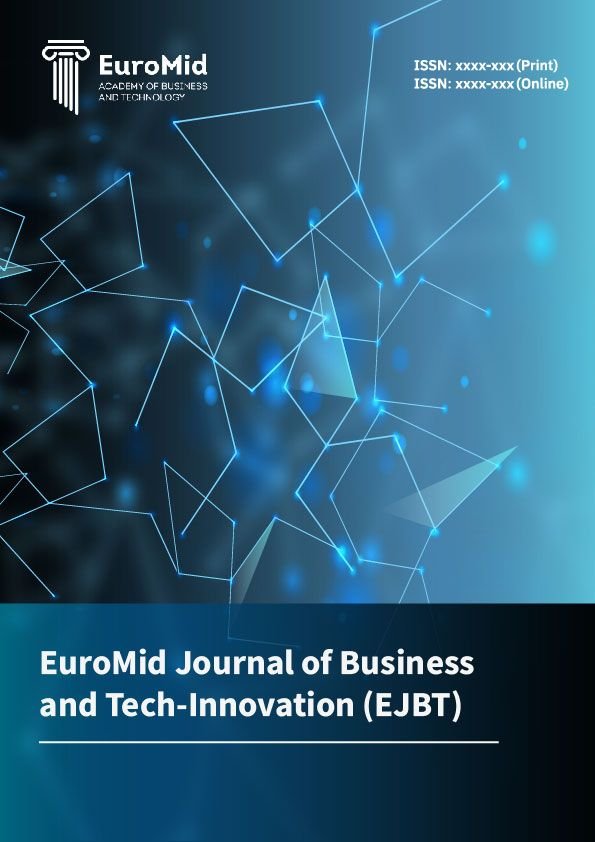Abstract
Buying clothes online presents challenges and problems, particularly in the form of consumer reluctance to purchase online due to fear and distrust. This research aims to address these issues by identifying their causes and proposing a model supported by virtual reality technologies and mobile applications within the framework of sensory marketing, tailored specifically for the clothing sector and mobile devices. The study builds on previous research and targets Palestinian consumers in the clothing sector. Two data collection tools were employed: a questionnaire and a focus group. A descriptive and deductive approach was adopted to analyze the data and draw conclusions. The results highlight the positive role of virtual reality in increasing consumer trust in online stores. It helps consumers overcome fears that the product's appearance in pictures may not match the actual item, while also reducing returns and addressing other concerns. This proposed model serves as a foundation for broader expansion and potential generalization on a global scale in the future. The study recommends adopting virtual reality in online selling applications and implementing the proposed model to enhance consumer trust and improve the overall online shopping experience.
References
Bentz, B. (2016). Relevance Raises Response: How to Engage and Acquire with Mobile Marketing. SkillBites, LLC.
Biswas, D., Labrecque, L. I., Lehmann, D. R., & Markos, E. (2014). Making choices while smelling, tasting, and listening: The role of sensory (dis)similarity when sequentially sampling products. Journal of Marketing, 78(1), 112–126. https://doi.org/10.1509/jm.12.0325
Chaffey, D., Hemphill, T., & Edmundson-Bird, D. (2019). Digital business and e-commerce management. Pearson UK.
Cho, C. H., Kang, J., & Cheon, H. J. (2006). Online shopping hesitation. CyberPsychology & Behavior, 9(3), 261–274. https://doi.org/10.1089/cpb.2006.9.261
Dacko, S. G. (2017). Enabling smart retail settings via mobile augmented reality shopping apps. Technological Forecasting and Social Change, 124, 243–256. https://doi.org/10.1016/j.techfore.2016.09.032
De Kare-Silver, M. (1999). E-shock 2000: The electronic shopping revolution: Strategies for retailers and manufacturers. Springer. https://doi.org/10.1057/9780230389670_8
Dennis, C., Kim, J., & Forsythe, S. (2009). Adoption of sensory enabling technology for online apparel shopping. European Journal of Marketing, 43(9/10), 1101–1120. https://doi.org/10.1108/03090560910976384
Fiore, A. M., Kim, J., & Lee, H.-H. (2005). Effect of image interactivity technology on consumer responses toward the online retailer. Journal of Interactive Marketing, 19(3), 38–53. https://doi.org/10.1002/dir.20042
Gupton, N. (2017). What’s the difference between AR, VR, and MR? https://www.fi.edu/difference-between-ar-vr-and-mr
Haque, A., Sadeghzadeh, J., & Khatibi, A. (2006). Identifying potentiality online sales in Malaysia: A study on customer relationships online shopping. Journal of Applied Business Research, 22(4). https://doi.org/10.19030/jabr.v22i4.1420
Huang, T. L., & Liao, S. L. (2017). Creating e-shopping multisensory flow experience through augmented-reality interactive technology. Internet Research, 27(2), 449–475. https://doi.org/10.1108/IntR-11-2015-0321
Hultén, B. (2020). Sensory Marketing: An Introduction. SAGE Publications.
Kemp, S. (2021). Digital 2021: Palestine. DataReportal. https://datareportal.com/reports/digital-2020-palestine
Krishna, A., Cian, L., & Sokolova, T. (2016). The power of sensory marketing in advertising. Current Opinion in Psychology, 10, 142–147. https://doi.org/10.1016/j.copsyc.2016.01.007
Krug, K. S., & Weaver, C. A. (2005). Eyewitness memory and metamemory in product identification: Evidence for familiarity biases. The Journal of General Psychology, 132(4), 429–445. https://doi.org/10.3200/GENP.132.4.429-445
Lindstrom, M. (2005). Broad sensory branding. Journal of Product & Brand Management, 14(2), 84–87. https://doi.org/10.1108/10610420510592554
Marar, R., & Al-Khaldi, S. (2020). Prospects for Regulating E-Commerce in Palestine. Palestinian Economic Policy Research Institute (MAS). (in Arabic)
Martin, C. G., & Oruklu, E. (2012). Human friendly interface design for virtual fitting room applications on Android based mobile devices. Journal of Signal and Information Processing, 3, 481–489. https://doi.org/10.4236/jsip.2012.34061
Moreira, A., Fortes, N., & Santiago, R. (2017). Influence of sensory stimuli on brand experience, brand equity and purchase intention. Journal of Business Economics and Management, 18(1), 68–83. https://doi.org/10.3846/16111699.2016.1252793
Palestinian Central Bureau of Statistics. (2019). Household Survey on Information and Communication Technology. (in Arabic)
Petit, O., Velasco, C., & Spence, C. (2019). Digital sensory marketing: Integrating new technologies into multisensory online experience. Journal of Interactive Marketing, 45, 42–61. https://doi.org/10.1016/j.intmar.2018.07.004
Ramya, N. A. S. A. M., & Ali, S. M. (2016). Factors affecting consumer buying behavior. International Journal of Applied Research, 2(10), 76–80.
Rodríguez-Torrico, P., San-Martín, S., & José-Cabezudo, R. S. (2019). What drives M-shoppers to continue using mobile devices to buy? Journal of Marketing Theory and Practice, 27(1), 83–102. https://doi.org/10.1080/10696679.2018.1534211
Rodas-Areiza, J. A., & Montoya-Restrepo, L. A. (2018). Methodological proposal for the analysis and measurement of sensory marketing integrated to the consumer experience. Dyna, 85(207), 54–59. https://doi.org/10.15446/dyna.v85n207.71937
Saeed, M. S., Alsiari, M. M., & Batool, I. (2016). Investigating the sensorial marketing methods in UK clothing retail sector. International Journal of Economics and Business Management.
Sivanesan, R. (2017). A study on problems faced by customers in online shopping with special reference to Kanyakumari District. International Journal of Research in Management & Business Studies.
Smink, A. R., Frowijn, S., van Reijmersdal, E. A., van Noort, G., & Neijens, P. C. (2019). Try online before you buy: How does shopping with augmented reality affect brand responses and personal data disclosure. Electronic Commerce Research and Applications, 35, 100854. https://doi.org/10.1016/j.elerap.2019.100854
Smith, D. N., & Sivakumar, K. (2004). Flow and internet shopping behavior: A conceptual model and research propositions. Journal of Business Research, 57(10), 1199–1208. https://doi.org/10.1016/S0148-2963(02)00330-2
Speicher, M., Cucerca, S., & Krüger, A. (2017). VRShop: A mobile interactive virtual reality shopping environment combining the benefits of on-and offline shopping. Proceedings of the ACM on Interactive, Mobile, Wearable and Ubiquitous Technologies, 1(3), 1–31. https://doi.org/10.1145/3130967
Watson, A., Alexander, B., & Salavati, L. (2018). The impact of experiential augmented reality applications on fashion purchase intention. International Journal of Retail & Distribution Management. https://doi.org/10.1108/IJRDM-06-2017-0117

This work is licensed under a Creative Commons Attribution 4.0 International License.
Copyright (c) 2022 Array





